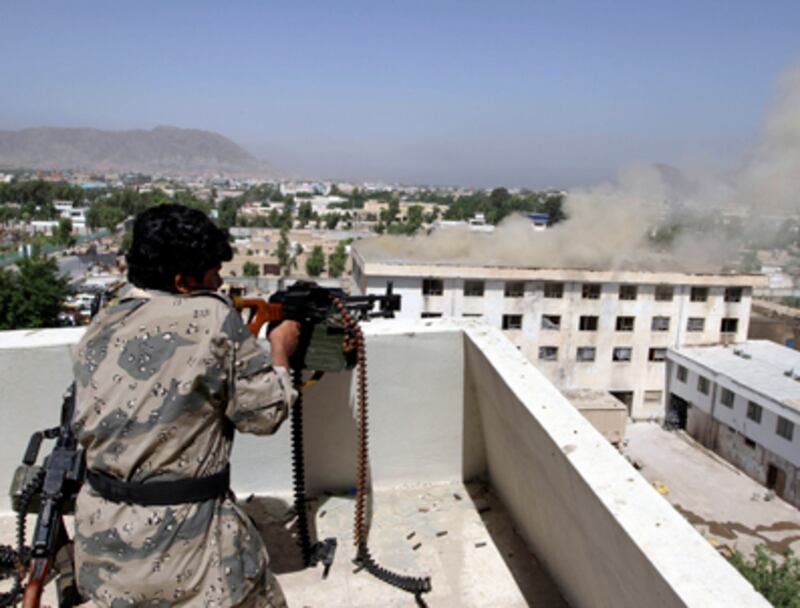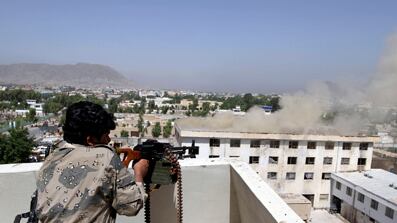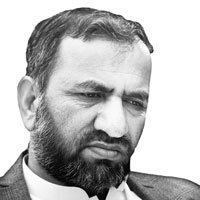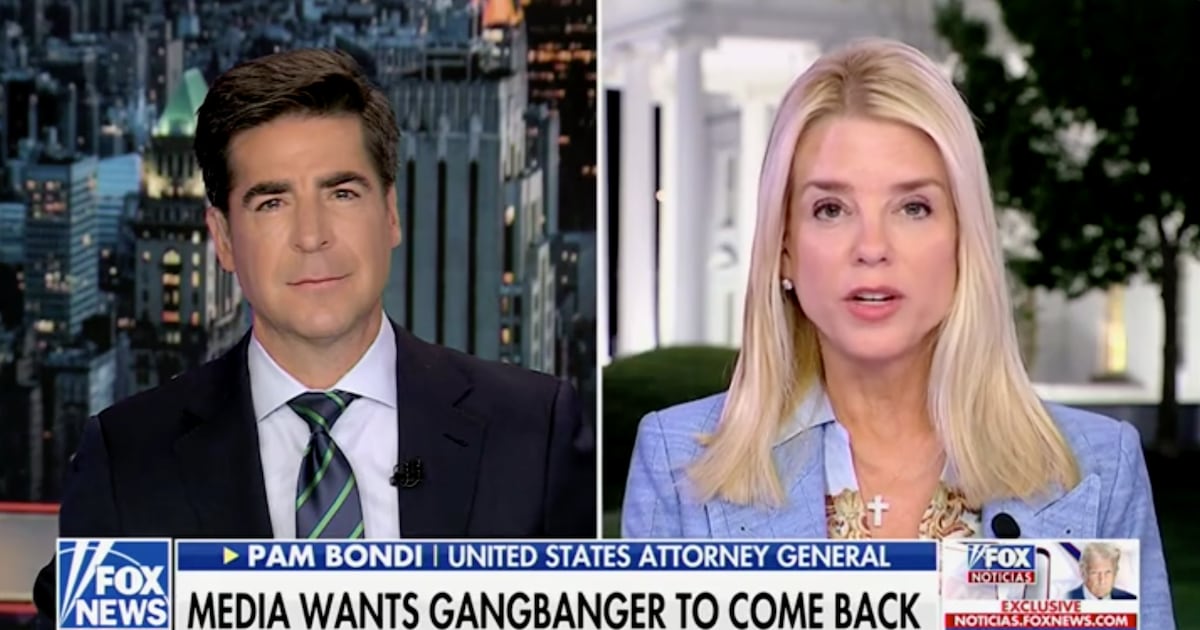The Taliban’s surprise assault in downtown Kandahar this past weekend was one of the biggest and best coordinated urban assaults by the Afghan insurgents since the war began. “All of Kandahar saw how helpless the police, army, the U.S. and NATO were as we controlled key parts of the city,” a Taliban liaison officer boasts to Newsweek. Although the guerrillas ultimately failed to take any of their primary targets, they are nevertheless celebrating the raid as a psychological victory.

The past year’s U.S. troop surge was supposed to have driven the Taliban’s devastated remnants deep into the countryside, away from Kandahar and the populous farming districts surrounding it. But somehow the insurgents managed to smuggle more than 60 fighters—the Taliban say 100—along with automatic weapons, RPGs, suicide vests and explosive-laden vehicles, into the heart of Kandahar’s business and government district, all without being detected. The guerrillas’ first shots rang out on Saturday, and the second-largest city in southern Afghanistan quickly fell into paralysis. People fled for cover; shops closed; traffic halted. For nearly two days, the city’s inhabitants were gripped by fear, depression and frustration as fighting raged around them.
Despite the insurgents’ losses, the attack proved they’re anything but a spent force.
People in the city were horrified that the Taliban could penetrate the city’s most tightly guarded locations, including the governor’s office, the city’s police headquarters, and the offices of Afghanistan’s intelligence agency, the National Directorate of Security. The guerrillas hammered the centers of government with car bombs, suicide bombers, and a relentless barrage of gunfire. The fighting killed a policeman, an intelligence officer, and two civilians, and injured nearly 50 people. But the carnage could have been even worse: by the time it was all over, government forces had defused some 15 unexploded bombs hidden in vehicles, donkey and fruit vendors’ carts. Kandahar’s governor, Tooryalai Wesi, said 20 Taliban were killed and seven were captured.
Despite the insurgents’ losses, the attack proved they’re anything but a spent force. It also demonstrated a chillingly obvious point to the city’s residents: the government’s intelligence and security forces are not in control—and worse than that, the attackers must have received a lot of help from supporters inside the city. “We stocked weapons and explosives inside safe houses in the city where many of our mujahedin were hiding,” says the liaison officer. “We didn’t have to infiltrate fighters and bombers into the city at the last moment.” He claims the cooperation came from people who are fed up with the corruption and opulence displayed by many Afghan officials. “People know that the government and police are too busy making money and have no way to stop the Taliban,” says a Taliban commander who uses the nom de guerre Mullah Barrot.
Barrot (the name means “explosives” in the Pashto language) had direct knowledge of planning for the attack. “Our main aim was to tell the U.S. and Karzai we are here, there, everywhere,” he says. “We are not weak and are changing our tactics and strategy according to the situation on the ground.” He seems particularly pleased with its successful use of a new communications setup. “We have a control room inside the city supported by another control room outside the city,” he says. “For the first time they coordinated the attack in a conference call to our fighters.” The system paid off, he says: “This new method of fighting inside the city allows us to fight and resist longer.”
The city has undergone a high-rise building boom in the time since the Americans drove the Taliban out, and the attackers found advantage in that fact, as well. During the two-day battle, they took up positions in multistory buildings near their targets, allowing them to fire directly into the government compounds. The irony did not escape the liaison officer. “In Kandahar big buildings may be a sign of progress, but now they are a problem,” he says. “Those structures gave us the best location to shell the governor and police and the intelligence office.”
Taliban commanders and sub-commanders tell The Daily Beast that they expect to refine the Kandahar assault’s tactics for use in future urban operations. It’s all part of a new strategy to move the fighting from the countryside to the towns and cities, they say. “We are bringing the war to the governors, police chiefs and other officials, to tell them and the U.S. that while you’re hunting the Taliban in the countryside, we are right next door to you in the cities,” says the liaison officer. Besides, he says, urban warfare commands more publicity: “In the countryside the war is not visible, but when it comes to the city, it’s a top media story. That’s part of our new psychological warfare plan.”
According to the Taliban, the idea is to draw the coalition’s already thinly stretched forces back to the population centers. That way the insurgents can operate freely in the rural areas. “We want to force the enemy to leave the countryside and return to protect the cities,” says the liaison officer. “The countryside is vital for funding, for our connections with people and for recruits.” One of their biggest losses in being driven out of the villages is their loss of the 10 percent tax the insurgents levy on the peasants’ harvests of opium and other cash crops.
But people in Kandahar say they’re tired of worry and fear, of shuttered shops and empty markets. They say they want someone held accountable for the lack of security. “For years these attacks have been happening in Kandahar and no one is ever held responsible,” says Shuqaiba Hashami, a member of parliament from the province. “This time the local authorities should resign, and new and better people should be brought in. Otherwise our suffering will never stop.” Nevertheless, the Taliban are promising they’ll be back.
Sami Yousafzai is Newsweek's correspondent in Pakistan and Afghanistan, where he has covered militancy, al Qaeda, and the Taliban for the magazine since 9/11. He was born in Afghanistan but moved to Pakistan with his family after the Russian invasion in 1979. He began his career as a sports journalist but switched to war reporting in 1997.
Ron Moreau is Newsweek’s Afghanistan and Pakistan correspondent and has been covering the region for the magazine the past 10 years. Since he first joined Newsweek during the Vietnam War, he has reported extensively from Asia, the Middle East, and Latin America.






